What a Cross-Channel Re-Engagement Campaign Really Looks Like
Published on August 03, 2017/Last edited on August 03, 2017/7 min read


Team Braze
Customer acquisition can be a challenge—but it’s not the end of the game. With the majority of users dropping off within days of downloading, it’s essential to have a strategy to retain the customers you have. Since it’s 5x more expensive to acquire a customer than retain, making sure you have some solid strategies to engage early and often can do a lot to support your brand’s long-term success.
Cross-channel marketing all starts with a strong onboarding campaign that walks users through all the cool features you offer and how they can get started. Once a user is engaging with your brand, you can keep them coming back through relevant, timely activity messaging and the occasional fun, promotional campaign. There often comes a time, though, when a user begins to show signs of lapsing. In this casea re-engagement campaign can help bring them back to the app—and a cross-channel approach can help you reach them more effectively.
The Channels
When you’re trying to get users to re-engage, there are two important actions you want them to take: opening the app, and spending time using it. The first hurdle to tackle is that first app open. Once you’ve convinced lapsing users to take that step, you can use other channels to keep them interested in exploring.
Push Notifications: These are often the best tools for quick and easy re-engagement if the user has been pretty active in the past. They know your brand and what you offer, so they might just need a nudge to open. The challenge with push is in the balance—how to send enough to keep people engaged but not so many that they’ll become annoyed. The best way to decide this is by planning re-engagement push based off of your regular push cadence and engagement levels. You may even want to use frequency capping to make sure the re-engagement campaign doesn’t lead to push overload.
Email: Emails give you a chance for a longer message with richer content, which may be necessary for users who have been less active. As part of a re-engagement campaign, emails are a great opportunity to remind users of the features of the app and build out your brand through longer-form messages.
In-App Messages: These will only help with re-engagement if you can get your users to open the app, but once they do, you can make use of rich content and ensure they see the message—even if only briefly. These messages can be a great place for a targeted special offer or message that would only be seen by those enrolled in the re-engagement campaign.
News Feed Cards: These are good for a lower-urgency approach to help users feel valued. By welcoming them back, highlighting cool features or recent activity, they can remind users of the value of the app and encourage them to spend more time exploring.
The Re-Engagement Campaign
Let’s look at a campaign for an (imaginary) budget-logging app called “PiggySaver.” The app helps people track small daily purchases to help them save up for something big, like a down payment on a car, a big trip, or large ticket item. The app requires ongoing engagement—by way of manual input—to work, because it only knows if someone has spent money (therefore, not saving) if they log it. Without logging, the app can only assume they’ve saved all their available spending money. The onboarding process helps users review their budget, determine how much they spend on little things throughout the week, and how much they might be able to save toward their goal.
This campaign would begin by enrolling users who haven’t logged in three days. From there, it would segment by users who have recently Mid-program users need to keep up with the plan and those who recently finished a goal may need a reminder to set up their new program.
Throughout the campaign, anyone who opens the app is unenrolled from the subsequent push or email messages (until they show signs of lapsing again), but they will see the welcoming in-app and newsfeed messages upon first open.
Message #1: Push Notification
By opening the campaign with a push notification, you may be able to get away with a quick reminder to drive user re-engagement. By using segmentation, you can tailor the nudging message to each user based on where they are in their lifecycle (in this case, whether they are in the middle of a saving program, or just finished one). Using the user profile to personalize messages with details like first name, gender, and recent activity can also increase the likelihood of engagement by boosting conversions by more than 27%.
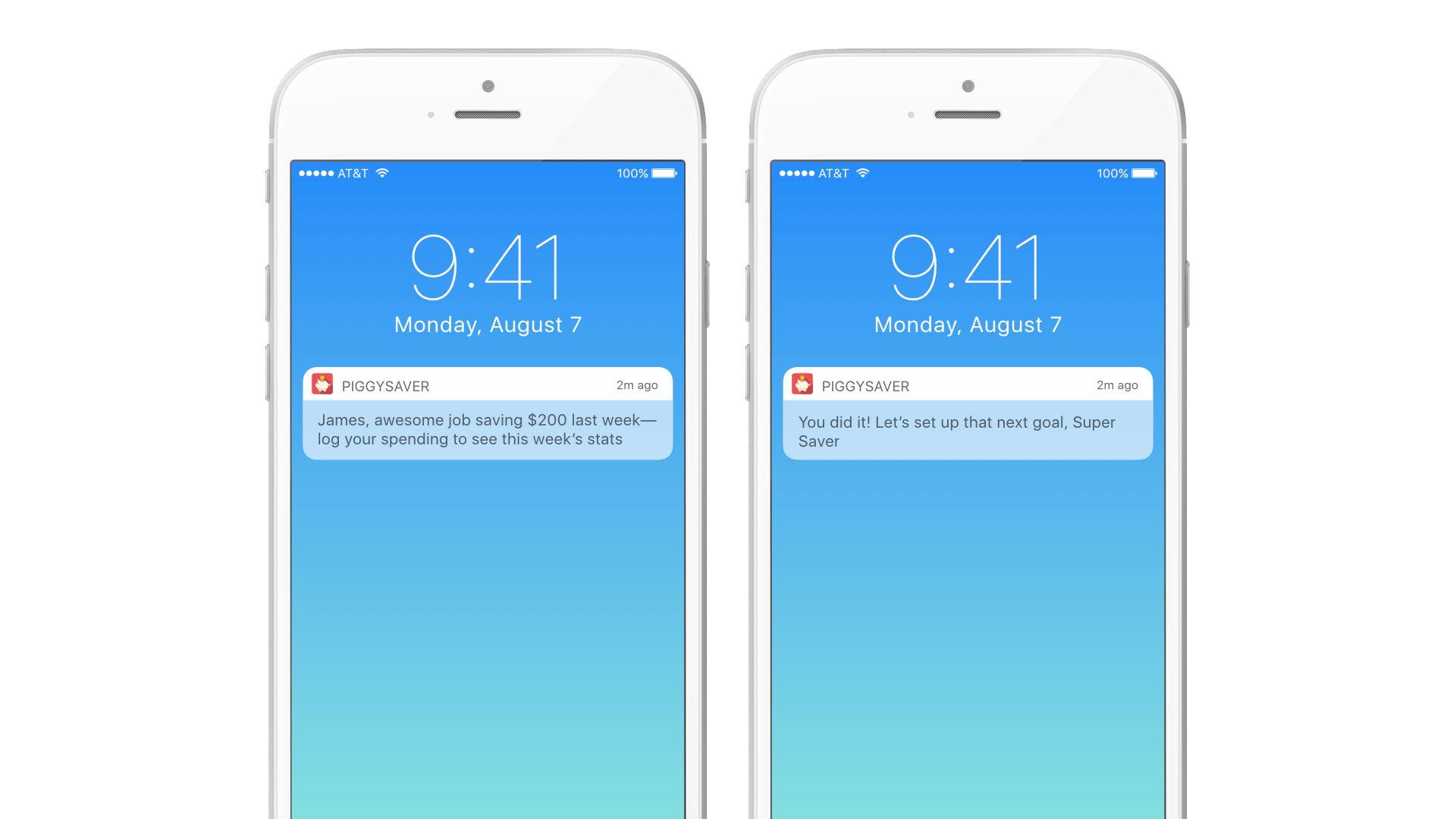
Both of these messages would deep link to the proper page–the first would lead to the daily log and the other would lead to the goal set-up screen. These will help users complete the expected action when clicked, instead of just landing them on the home screen.
Message #2: Email
Email is another way to reach users outside of the app, and can be especially useful if your lapsing users don’t have push notifications enabled on their phone. This email uses a friendly tone to remind users of PiggySaver’s value, while also offering opportunities to link back into the app through deeplinked call to action buttons. Messages within the app would also be personalized to the user’s experience. For instance, if a user indicated that they were using PiggySaver to save for a vacation, the messaging could get him excited about how close he is to his saving goal. Meanwhile a user who has recently completed a saving goal could receive messaging about the next big vacation or item they’d like to save for.
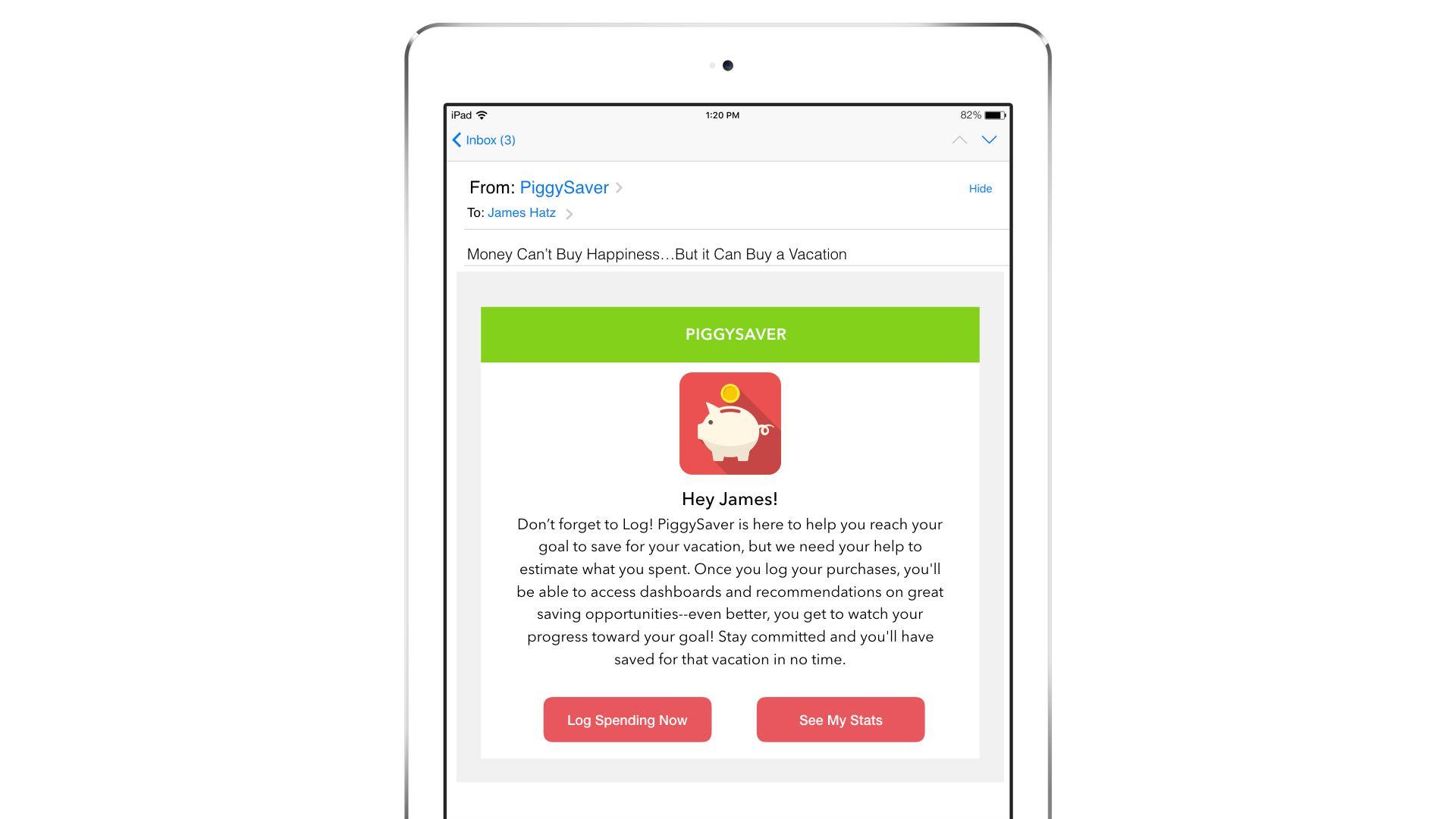
Message #3: Push notification
At this point, PiggySaver needs to create a bit more urgency to re-build the habit of logging data. Mid-campaign can be a good time to try out some special deals or offers to entice users to return. Since PiggySaver doesn’t have in-app currency or discounts, they promote some premium functionality for free subscribers to try out.
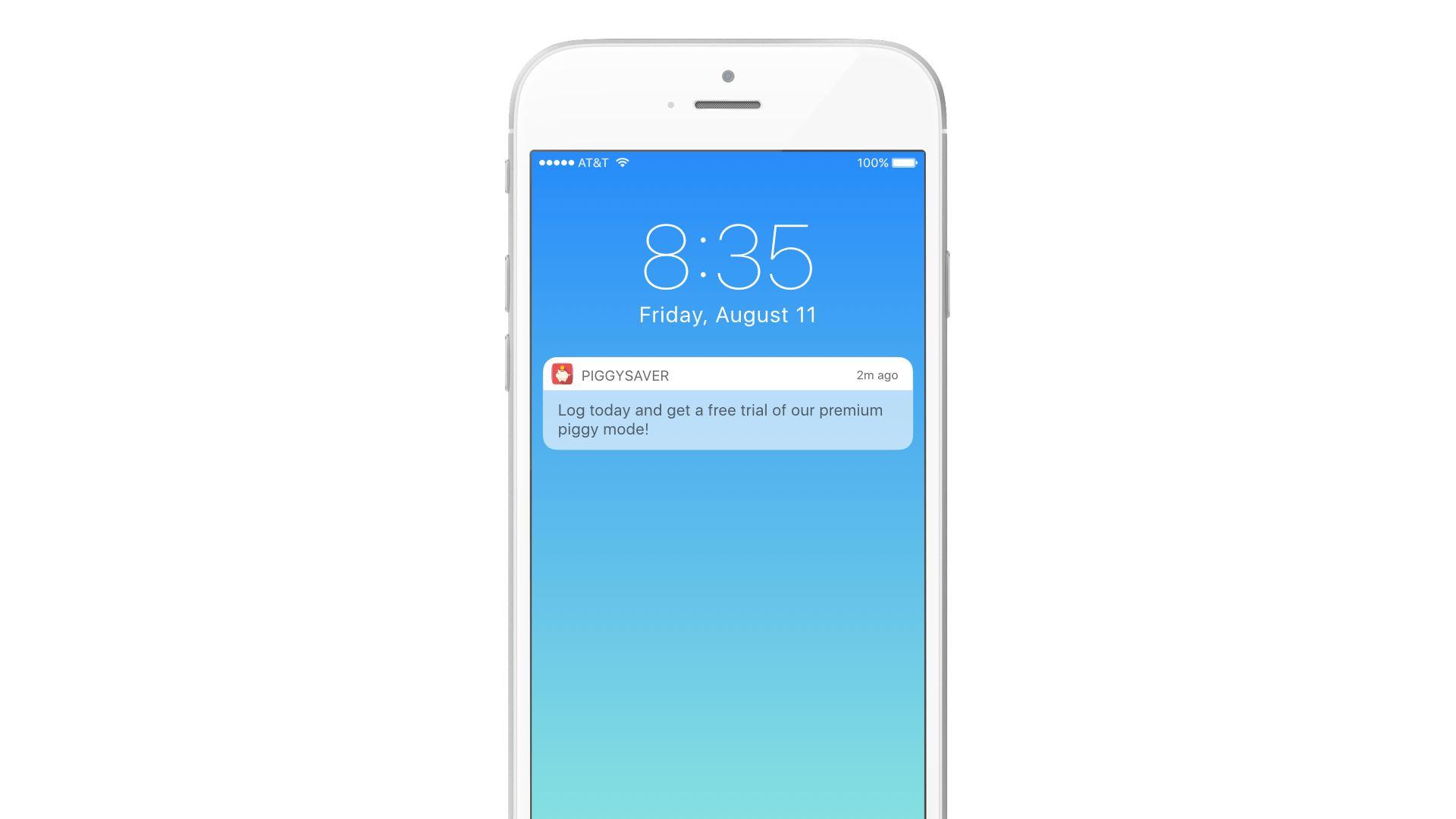
Message #4: Email
At some point in a re-engagement campaign, you might want to consider giving users an easy out. Better to recognize that it’s not a good time than to annoy them with too many messages. You may want to determine the best time to cease communicating and let users know that you’ll be there when they are ready to come back. Many people will appreciate the conscientious nature of a message like this and it may remind them why they love your brand and bring them back.
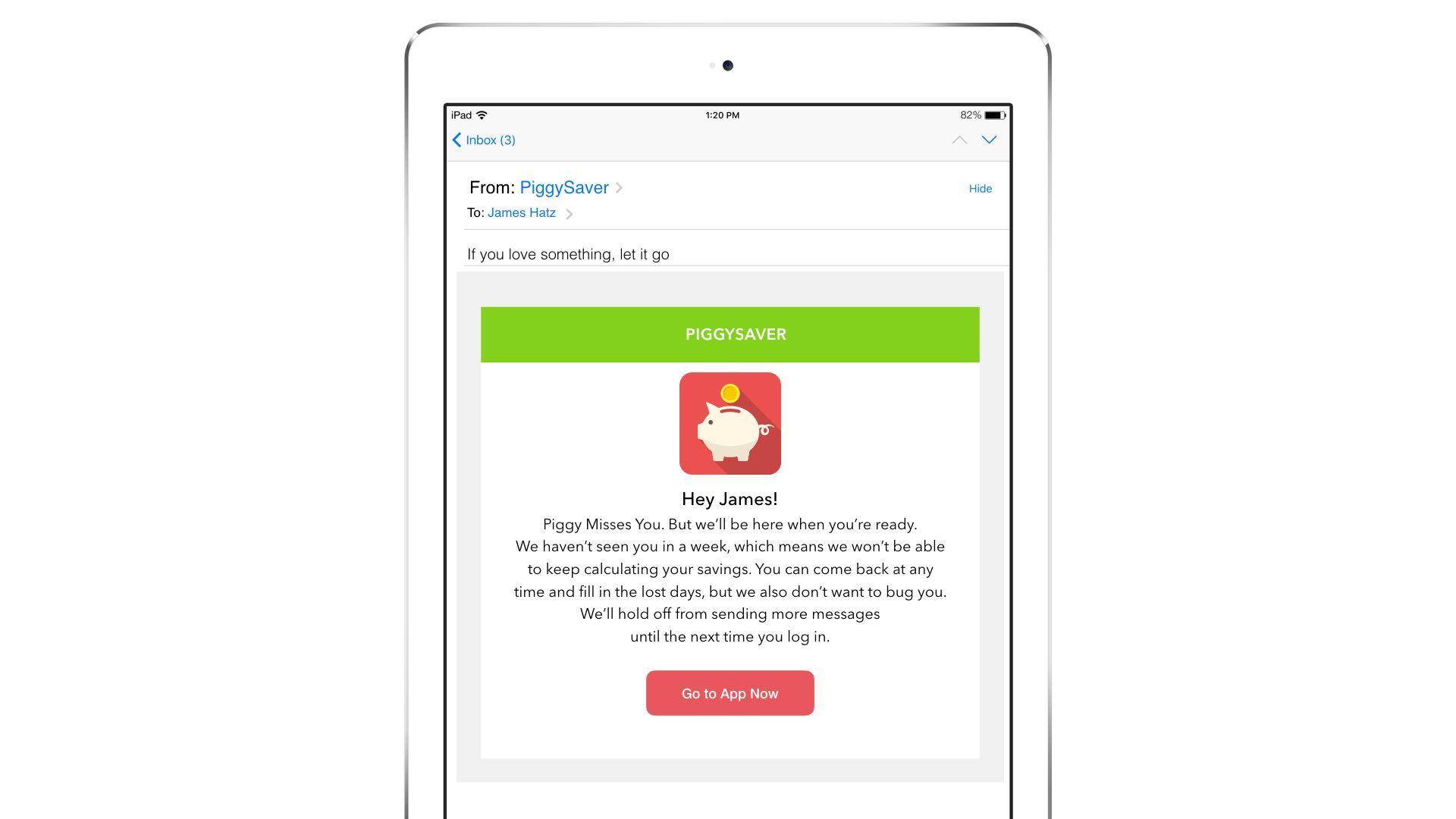
Message #5: In-App Message
Once the app is open, in-app messages can be used to offer warm welcome back messages, special rewards or offers for coming back, and more.r. If it’s been a while, it can also be a great way to highlight features they may have missed. This message reminds users that they are valued and invites them to pick up where they left off.
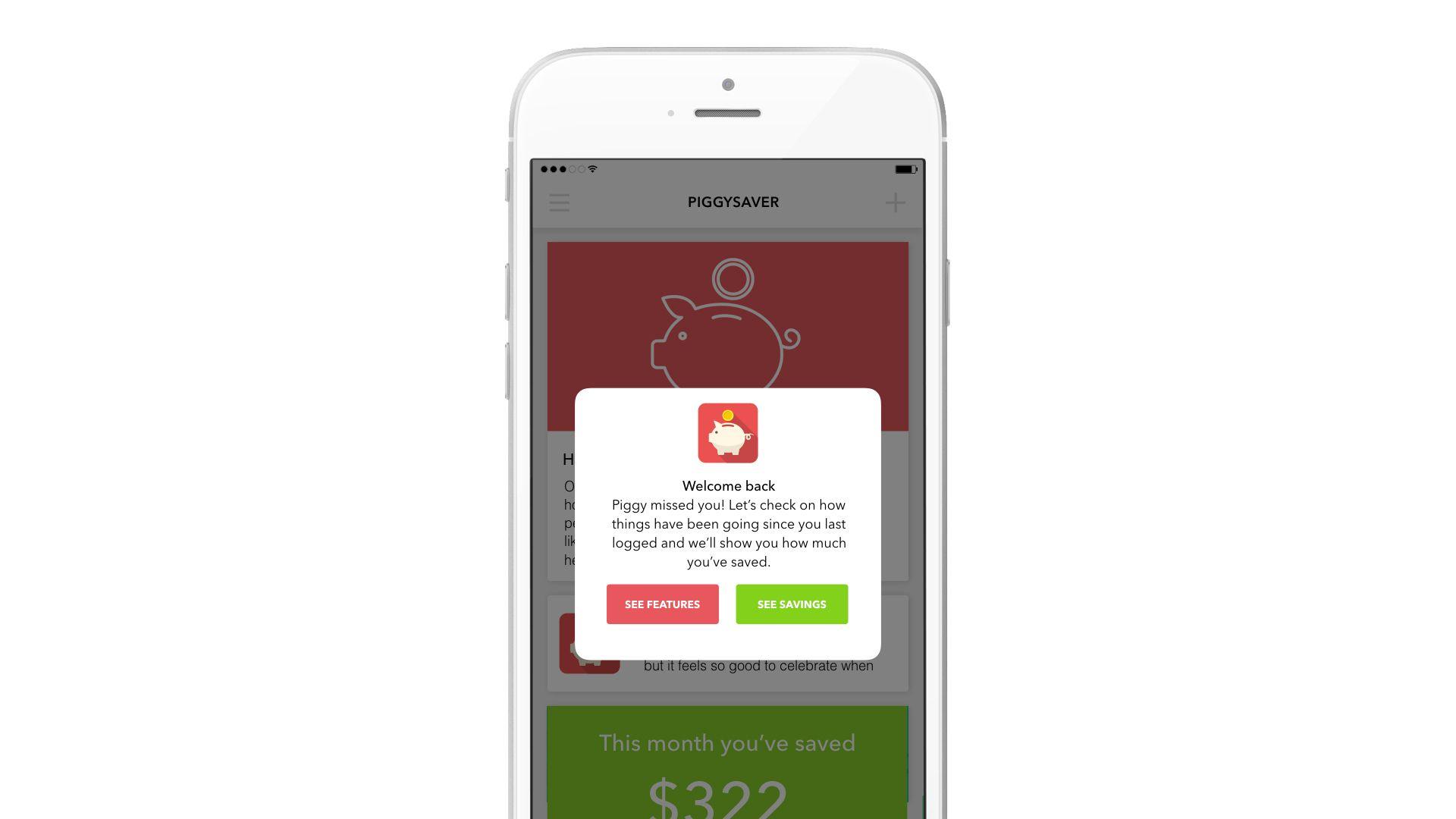
Message #6: News Feed Card
News Feed Cards can encourage users to stick around longer and explore all that the app has to offer. In this example, the first card offers information about a useful (but often overlooked) feature of the app to reinforce the value, while the second card reinforces encouraging brand messaging to foster a relationship with the users.
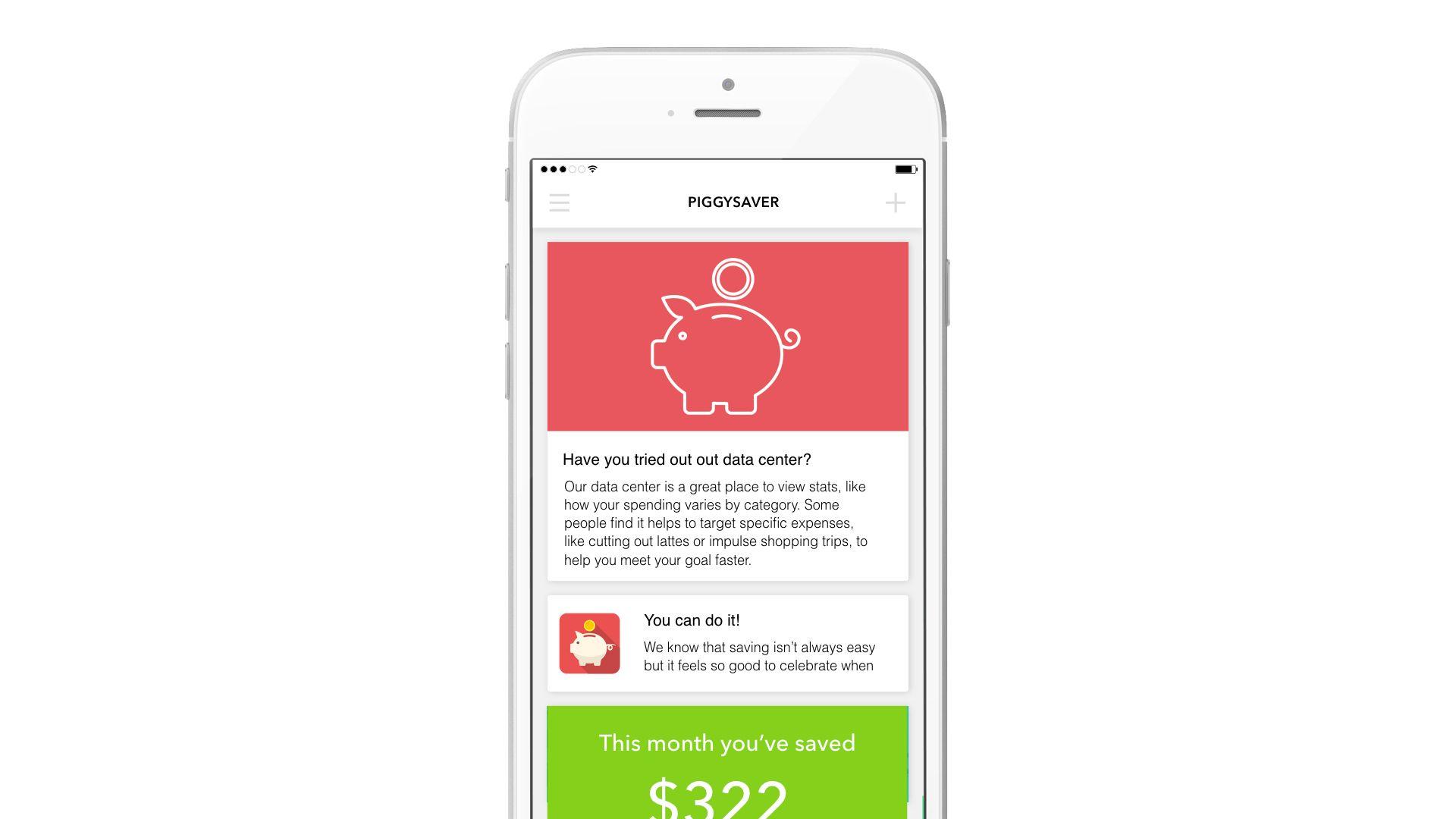
The Takeaway
By using push and email, PiggySaver is more likely to find a way to reach their lapsing users and encourage them to come back. Once users re-enter the app, the use of News Feed Cards and in-app messages encourages them to spend more time with the hope of leading to longer-term engagement. Users only receive push and emails until they open the app or until the campaign runs its course and gives them a break from communication.
While this is just one approach for a re-engagement campaign, it sets a strong template for how to reach your users based on their lifecycle stage, activity level, and responsiveness to your campaign. With the right combination of messages, your lapsed users might just go on to become power users.
Releated Content
View the Blog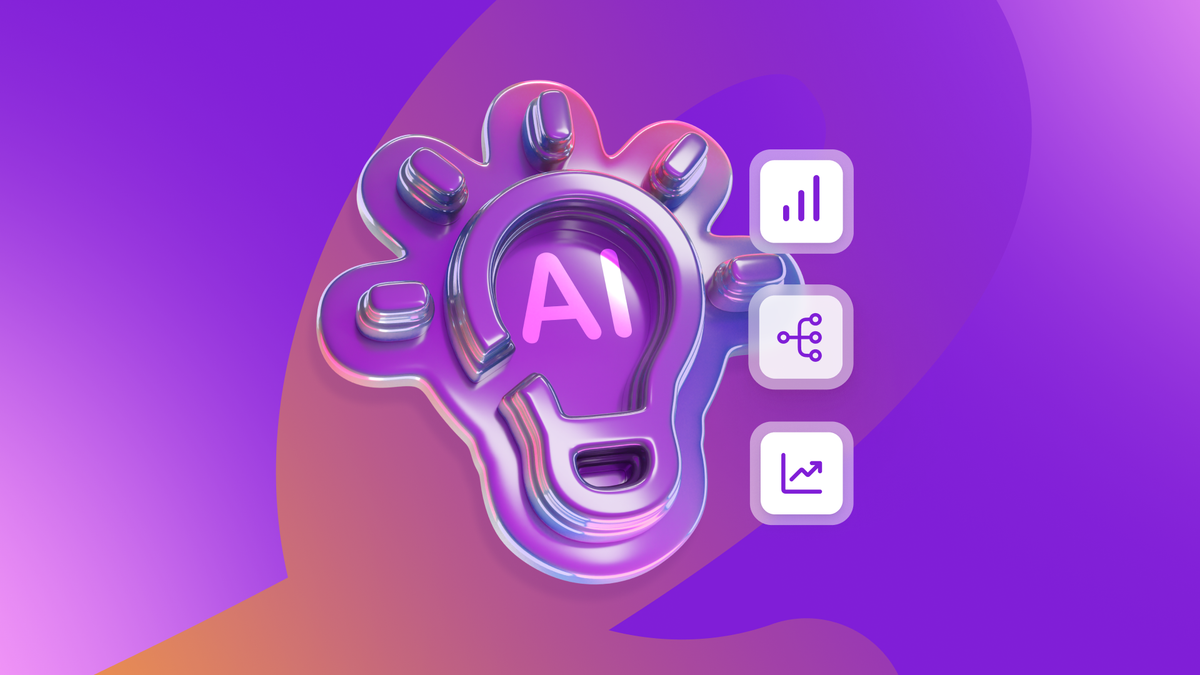
Enterprise generative AI: Transforming data, decisions, and customer experiences

Team Braze
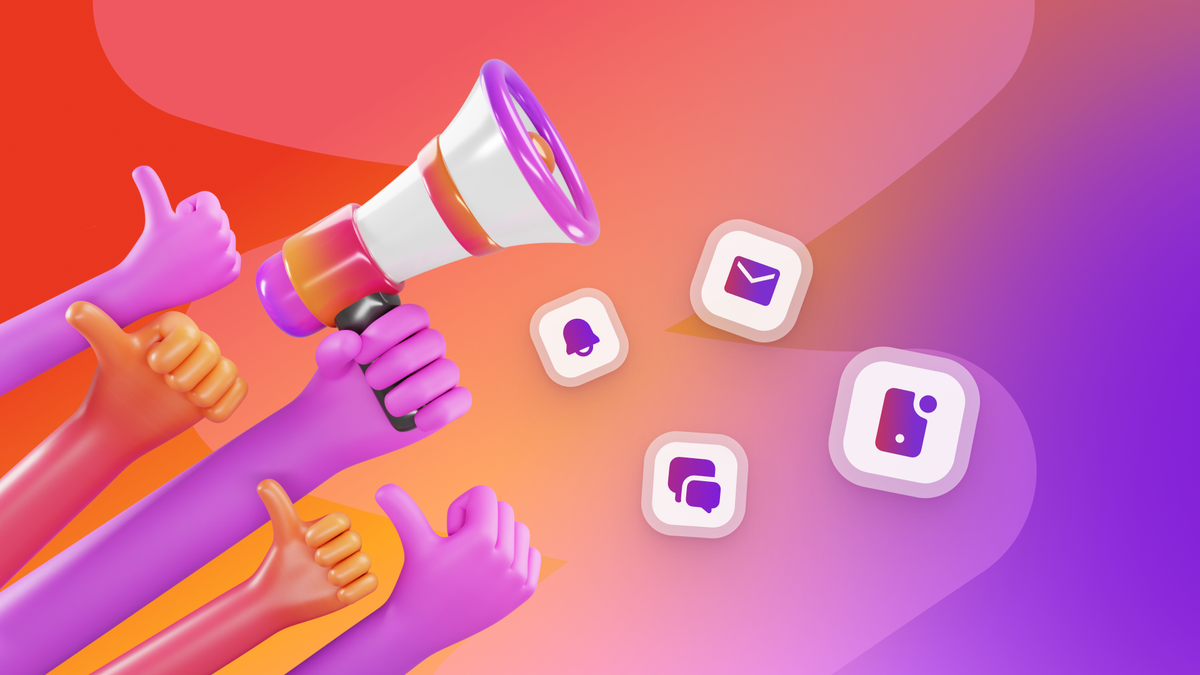
Omnichannel personalization: Delivering consistent, connected customer experiences

Team Braze

Are you AI-savvy enough to survive? A wake-up call for CMOs
